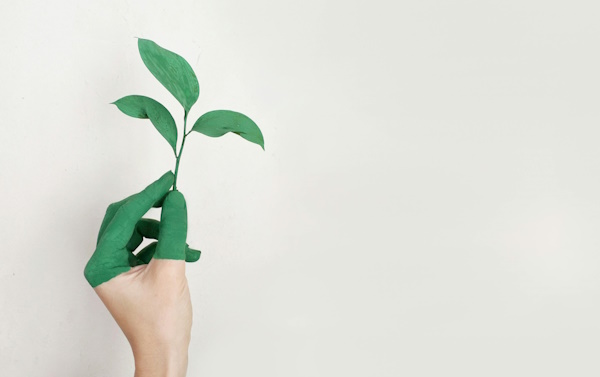Top Organic Gardening Tips for Healthier Produce & Ecosystem
Diving into the world of organic gardening can feel like stepping into a lush, green oasis where every plant thrives without the need for harsh chemicals. It's a journey that not only rewards you with bountiful harvests but also contributes to a healthier planet. Whether you're a seasoned green thumb or just starting, understanding the basics of organic gardening is key to your success.
You might wonder what makes organic gardening stand out. It's all about working with nature, not against it. By fostering a balanced ecosystem in your backyard, you're ensuring that your plants grow strong and resilient. In the following paragraphs, we'll share some essential tips that'll help you master the art of organic gardening. Get ready to transform your garden into a vibrant, pesticide-free paradise where every plant has the chance to shine.
Understanding Organic Gardening
Organic gardening goes beyond just avoiding synthetic pesticides and fertilizers. It's about embracing a holistic approach that supports and nurtures your garden's entire ecosystem. You're not just growing plants; you're cultivating a symbiotic relationship with soil, water, microorganisms, insects, and animals. This fundamental understanding is crucial as it shapes every decision you make in your garden, from the types of plants you choose to how you manage pests and diseases.
Soil health is the cornerstone of organic gardening. Healthy soil is alive with microorganisms that help plants grow by improving soil structure and providing essential nutrients. To enhance soil fertility organically, you can:
- Add compost to supply a steady, balanced source of nutrients.
- Use green manures and cover crops to fix nitrogen and improve soil structure.
- Apply natural mulch to conserve moisture and suppress weeds, while also feeding soil microbes.
Water conservation is another key aspect. Efficient water use reduces your garden's environmental footprint and supports plant health. Techniques like drip irrigation and rainwater harvesting can significantly lower your garden's water demand and ensure your plants get the hydration they need without wasteful runoff.
Choosing the right plants is also vital. Opt for species that are native to your area or well-suited to your local climate and soil conditions. These plants will be more resilient to pests and diseases and require less input from you in terms of water, fertilizers, and other resources.
Integrated Pest Management (IPM) is a sustainable strategy that involves monitoring your garden for pests and taking action only when necessary, using the least toxic approach available. This could include encouraging beneficial insects that prey on pests, using physical barriers to protect plants, or applying organic pesticides as a last resort.
Remember, organic gardening is a journey. It’s about learning and adapting as you go, observing your garden, and making changes based on what you see. Each season brings new challenges and opportunities to grow as an organic gardener.
Benefits of Organic Gardening
When you step into the world of organic gardening, you're embracing a strategy that yields a multitude of benefits for both the environment and your health. Understanding these advantages can help you make informed decisions and truly appreciate the value of your efforts.
Enhanced Nutritional Value is one of the standout benefits of organic gardening. Studies have shown that organically grown fruits and vegetables can have higher levels of certain vitamins and antioxidants compared to conventionally grown produce. This means that your home-grown organic produce isn't just fresher but potentially healthier too.
Another significant advantage is Improved Soil Health. Organic gardening practices, such as composting and mulching, enrich the soil with organic matter, improving soil structure, fertility, and moisture retention. Healthier soil fosters stronger plant growth, reducing the need for chemical fertilizers that can harm the environment.
Reduced Chemical Exposure is a critical benefit, especially for households with children and pets. By avoiding synthetic pesticides and fertilizers, you minimize your exposure to harmful chemicals, ensuring a safer environment for your family and local wildlife.
Organic gardening also contributes to Biodiversity Preservation. By favoring a variety of plants and natural pest control methods, you create a balanced ecosystem in your garden. This attracts beneficial insects, birds, and other wildlife, enhancing pollination and natural pest management.
Additionally, organic gardening practices often require Less Water, making them more sustainable and environmentally friendly. Techniques like mulching and drip irrigation reduce water wastage, conserving this precious resource.
By understanding and implementing the fundamentals of organic gardening, you’re not just nurturing plants; you’re fostering a healthier, more sustainable environment right in your own backyard.
Creating a Balanced Ecosystem
In the heart of organic gardening lies the principle of fostering a balanced ecosystem. This approach not only enhances your garden's health and productivity but also supports local wildlife, creating a harmonious environment right in your backyard. Understanding the elements of a balanced ecosystem is key to your organic gardening success.
Firstly, diversity is crucial. Plant a variety of crops to encourage a wide range of beneficial insects and animals to take up residence. These natural allies help control pest populations and pollinate your plants, leading to a more productive garden. Incorporating native plants is especially beneficial as they are adapted to your local climate and soil, and they attract native species of pollinators and predators.
Secondly, focus on soil health. Healthy soil is the foundation of a thriving garden ecosystem. Enrich your soil with organic matter like compost or well-aged manure to boost its fertility and structure. Organic matter improves water retention, which is vital for plant health and reduces the need for frequent watering.
Additionally, practice crop rotation and companion planting. These techniques not only reduce pest and disease problems but also enhance biodiversity in your garden. Crop rotation involves changing the location of your plants each year, which disrupts the life cycle of pests. Companion planting, on the other hand, is the strategy of placing plants close together for mutual benefit, such as natural pest control or improved growth and flavor.
By implementing these strategies, you're not just cultivating plants; you're nurturing a vibrant ecosystem that supports itself. This harmonious approach minimizes the need for chemical interventions, making your garden a safe haven for both your family and the local wildlife.
Choosing the Right Plants
When diving into the world of organic gardening, choosing the right plants is crucial for success. Not only does this ensure a bountiful harvest, but it also plays a significant role in maintaining the ecological balance of your garden. Here are a few tips to guide you in selecting the best plants for your organic oasis.
Research Local Plant Varieties
Start by exploring plants that thrive in your local climate and soil conditions. Indigenous plants are more resistant to pests and diseases, requiring fewer interventions. This approach supports local ecosystems and wildlife, contributing to a healthier garden environment.
Consider Seasonality
Understanding the seasons in your region is key. Select plants that are well-suited to your area's temperature swings and weather patterns. This step reduces the need for artificial protections and ensures that your garden blooms in harmony with nature's cycles.
Evaluate Sunlight and Space Requirements
Before you plant, assess the sunlight and space requirements of each species. Some plants need full sun, while others thrive in partial shade. Proper spacing allows for adequate air circulation, which is essential for preventing fungal diseases and promoting healthy growth.
Opt for Disease-Resistant Varieties
Choosing disease-resistant varieties can significantly reduce the need for treatments and increase the chances of a successful harvest. Many plant breeders have developed varieties that can fend off common diseases naturally, enabling you to maintain a healthier garden with minimal intervention.
Select for Diversity
A diverse garden is a stable garden. Plant a mix of crops to encourage beneficial insects and reduce the risk of pest outbreaks. Companion planting can further enhance plant health and productivity, creating a symbiotic environment where plants support each other's growth.
By carefully selecting the right plants for your garden, you're laying the foundation for a thriving, sustainable organic ecosystem.
Maintaining Soil Health
When diving into the world of organic gardening, one of your top priorities should be maintaining soil health. Healthy soil is the foundation of a thriving garden, supporting plant growth by providing essential nutrients, retaining moisture, and fostering beneficial microorganisms. Here are key practices to ensure your soil remains robust and fertile.
Test Your Soil
Before planting anything, it's crucial to understand the current state of your soil. Soil testing kits are readily available and can provide insights into pH levels, nutrient composition, and more. Based on the results, you can tailor your organic matter additions and other treatments to precisely what your garden needs.
Add Organic Matter
Incorporating organic matter is like giving a multivitamin to your garden. Not only does it improve soil structure — enhancing aeration and water retention — but it also boosts nutrient levels. Consider adding:
- Compost
- Well-rotted manure
- Leaf mold
These additions encourage a vibrant ecosystem within your soil, including worms and beneficial bacteria, which play a critical role in breaking down organic material into nutrients plants can absorb.
Practice Crop Rotation
Crop rotation is another pillar in maintaining soil health. Different plants have varying nutrient needs and pest attraction profiles. By rotating crops annually, you can prevent nutrient depletion and reduce the buildup of pests and diseases. This strategy is especially effective for nitrogen-fixing plants like peas and beans, which can naturally replenish nitrogen levels in the soil.
Mulching
Mulching is your garden's best friend for multiple reasons. Applying a layer of organic mulch helps retain soil moisture, suppresses weeds, and as it decomposes, it adds organic matter back into the soil. Materials like straw, shredded bark, or leaf litter can be effective choices, offering both practical benefits and enhancing your garden's aesthetic.
By adhering to these practices, you not only nourish your garden from the ground up but also pave the way for healthier, more vigorous plants. Prioritizing soil health is key in organic gardening, ensuring both short-term beauty and long-term sustainability.
Proper Watering and Irrigation
Understanding the significance of Proper Watering and Irrigation is crucial in organic gardening. It's not just about quenching your plants' thirst; it's a delicate balance that can determine the health and yield of your garden. Different plants have varying water needs, and over- or under-watering can stress plants, making them more susceptible to disease and pests.
Firstly, it's essential to know your soil type. Sandy soils drain quickly and may require more frequent watering, while clay soils hold moisture longer and can be prone to waterlogging. Using a simple soil test can guide your watering schedule effectively.
Implementing a drip irrigation system is a smart move for any organic garden. It delivers water directly to the roots of the plants, where it's needed most, greatly reducing evaporation and water waste. Another advantage of this system is minimizing the moisture on plant leaves, which can deter certain fungal diseases.
Mulching plays a pivotal role in retaining soil moisture. By covering the soil with organic materials like straw, leaves, or wood chips, you significantly reduce evaporation. Mulch also keeps the soil temperature stable, benefiting your plant's roots. Regularly check the moisture level under the mulch to ensure your soil is not overly dry or saturated.
Watering in the early morning is ideal as it allows water to soak deep into the soil, reaching the roots while minimizing evaporation. Evening watering can lead to prolonged moisture on leaves, increasing the risk for some plant diseases.
Remember, the goal is to encourage deep root growth which supports healthier, more drought-resistant plants. This often means watering less frequently but more deeply. Observing your plants and adjusting your watering strategy as needed can lead to a thriving, sustainable organic garden.
Natural Pest Control Methods
When diving into organic gardening, understanding Natural Pest Control Methods becomes paramount. It's about leveraging nature's balance to keep unwanted visitors at bay without resorting to harmful chemicals. Let's explore some effective strategies.
First, introduce beneficial insects. Ladybugs, lacewings, and praying mantises are your garden's best friends, preying on common pests such as aphids, mites, and caterpillars. Purchasing these insects from a reputable supplier and releasing them into your garden can provide a significant boost to your pest control efforts.
Plant diversity also plays a crucial role in natural pest management. Including a variety of plants in your garden creates a more balanced ecosystem, which can deter pests. Certain plants, like marigolds and nasturtiums, are known for their pest-repellent properties. Integrating these into your garden not only adds beauty but also serves as a natural deterrent.
Another key strategy is companion planting. This involves strategically positioning plants that are beneficial to each other. For example, planting garlic near tomatoes can help repel red spider mites. Similarly, basil planted alongside your vegetables can improve their growth while keeping flies and mosquitoes at bay.
Physical barriers such as floating row covers made of lightweight fabric can shield your plants from pests. These covers allow sunlight and water in while keeping insects out. Ensure the edges are securely fastened to the ground to prevent pests from entering.
Lastly, DIY sprays can be an effective and eco-friendly solution. A popular option is a mixture of water and neem oil, known for its pest-repellent properties. However, always test a small area of the plant first to ensure it doesn't react negatively.
By implementing these natural pest control methods, you're not just protecting your plants; you're ensuring a healthier ecosystem for your garden. Balancing these techniques with the knowledge of when to intervene and when to let nature take its course is the essence of successful organic gardening.
Harvesting and Preserving Your Organic Produce
Harvesting your organic garden is not just about picking fruits and vegetables at their peak; it's a fine art that ensures maximum flavor and nutrition. Knowing when and how to harvest can make all the difference in your gardening experience. Typically, early morning is the best time for harvesting most produce, as it's when they are most hydrated and packed with nutrients. For leafy greens, wait for the morning dew to evaporate before picking.
The signs of readiness vary by plant. For instance, tomatoes should be firm and fully colored, while root vegetables like carrots and beets often give a hint by partially popping out of the soil. Herbs should be harvested before they flower for the best aroma and taste. Regular harvesting also encourages plants to produce more, boosting your garden's yield.
Preserving Your Harvest
Once harvested, preserving your organic produce allows you to enjoy the fruits of your labor throughout the year. There are several methods to consider:
- Freezing: Ideal for most fruits and vegetables. Blanching them first can help retain color, texture, and nutrients.
- Canning: Perfect for creating sauces, jams, and pickles. It requires some equipment and knowledge of safe canning practices.
- Drying: Herbs, some fruits, and vegetables are suitable for this method. You can use a dehydrator or slow oven drying.
- Storing in Cellars or Cool Spaces: Specific produce like potatoes, onions, and winter squash do well in cool, dark environments.
Being mindful of the preservation method that best suits the type of produce you've grown is crucial. For example, tomatoes are excellent for canning, whereas leafy greens are best frozen. Always label your preserved goods with the date of preservation, and aim to use them within a year for the best quality. Additionally, rotating your stock ensures that nothing goes to waste and you're continuously enjoying last season's harvest.
Conclusion
Embracing organic gardening not only enriches your table with more nutritious produce but also contributes to a healthier planet. By incorporating the tips shared, from selecting the right plants to natural pest control and efficient harvest preservation, you're stepping into a world where gardening works hand in hand with nature. Remember, your efforts in creating a chemical-free garden help maintain soil health, protect biodiversity, and ensure the wellbeing of future generations. So go ahead, apply these strategies, and watch your garden thrive organically. It's not just about growing food; it's about nurturing life in its purest form.







